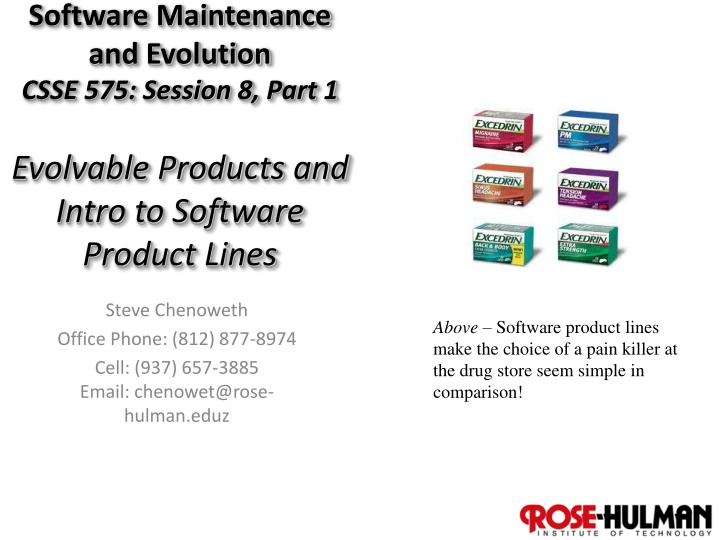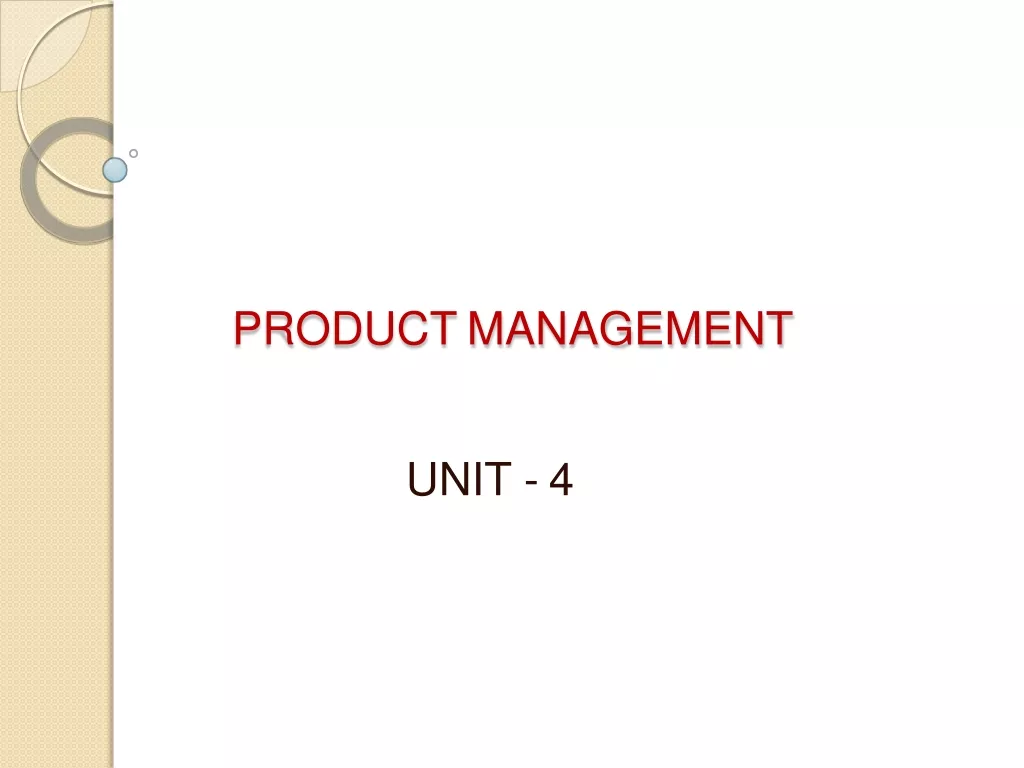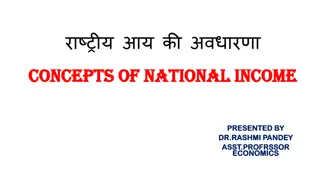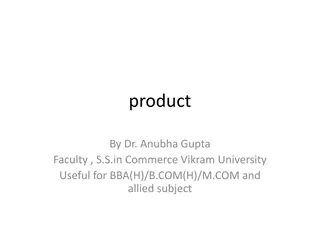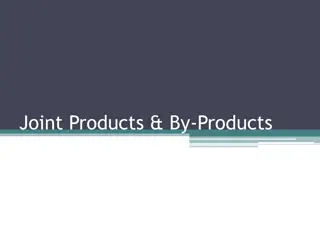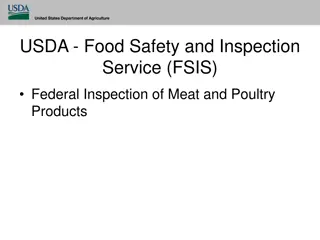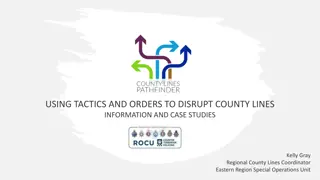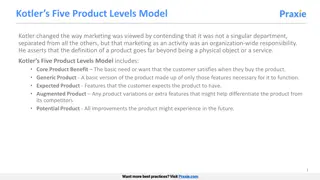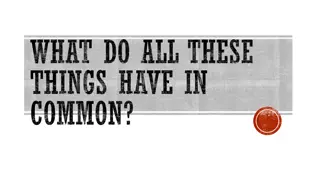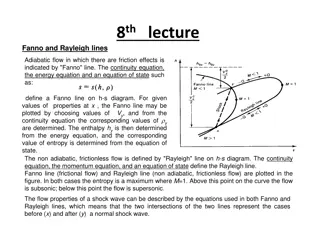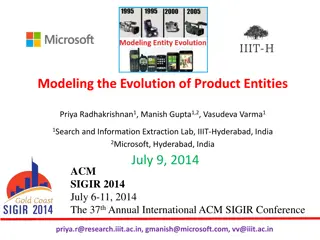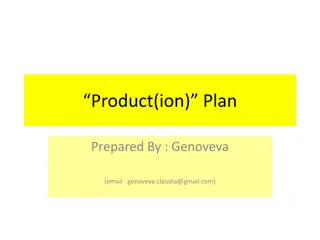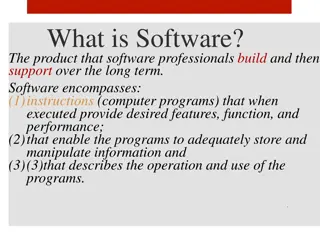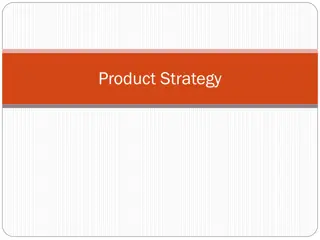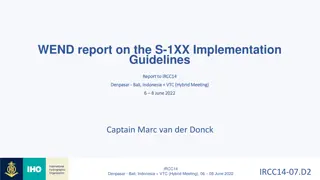Evolvable Products & Software Product Lines Overview
This session delves into evolvable products, software product lines, and challenges in managing configurations for multiple related products. Explore strategies to streamline development and enhance user experience across product suites.
Download Presentation

Please find below an Image/Link to download the presentation.
The content on the website is provided AS IS for your information and personal use only. It may not be sold, licensed, or shared on other websites without obtaining consent from the author.If you encounter any issues during the download, it is possible that the publisher has removed the file from their server.
You are allowed to download the files provided on this website for personal or commercial use, subject to the condition that they are used lawfully. All files are the property of their respective owners.
The content on the website is provided AS IS for your information and personal use only. It may not be sold, licensed, or shared on other websites without obtaining consent from the author.
E N D
Presentation Transcript
Software Maintenance and Evolution CSSE 575: Session 8, Part 1 Evolvable Products and Intro to Software Product Lines Steve Chenoweth Office Phone: (812) 877-8974 Cell: (937) 657-3885 Email: chenowet@rose- hulman.eduz Above Software product lines make the choice of a pain killer at the drug store seem simple in comparison! 1
We just saw In week 7 s discussions: Jarzabek s approach to controlling software evolution by a mixed approach to defining features and generating them. Based on the problem of having unnecessary complexity in the solution as it evolves over time But there are other ways to skin a cat 2
Product lines = Load lines in configuration management - A problem! Also called code lines For one product: What goes into a particular release for a particular customer or group of customers at a given time? We know there are issues with the time part: What goes into Release 1.2.45 vs the next release? What s ready? What s important? And as soon as it s not the same for everyone, at least at one time, you have the product lines problem 3
Same thing only different When you have multiple, closely-related products as the user uses them, so they need commonalities from that perspective: Say, 5 products for the same customer, which are supposed to work together, and All 5 sit in the same labs, and the same admin/technician ends-up as the operator for all 5, and He/she d like one common interface for lots of reasons, and No can do because they all were done by different groups at different times, not anticipating this. So, you should ve had some common software in these, but didn t. 4
Or, Products that should form some software suite from the development perspective, like Photoshop, and Dreamweaver And they ought to have lots of common underlying software, so as to make their ongoing development simplified. 5
Compare file menus Dreamweaver Photoshop 6
Product Lines Here s the approach most people now take to producing multiple, related products at the same time. This includes, especially, multiple versions of the same product, intended for different customers. Develop product 1 1-Spl = 4 load lines that are better than 3 ! Develop product 2 2-Spl Develop core product CORE Develop product 3 3-Spl 7
So, you really have Fan-in of code for a build, from various organizations and outside sources, and Fan-out of most of the modules into multiple destinations (products or versions)! Keeping complex build processes straight requires the establishment of policies, and of automation implementing those like when code has to arrive for final testing, to be included in a release. 8
What makes product lines work? You have to spend time finding commonalities Be sure these are done only once That means, your configuration management system has to be smart enough to merge: Common parts from where they are, with The special parts that make this product This build process happens over and over For testing, as well as sending to customers 9
How do you, the developer, manage what s common vs what s different ? Support variation points by 1. Inclusion or omission of elements 2. Inclusion of a different number of replicated elements 3. Selection of versions of elements that have the same interface but different behavioral or quality attribute characteristics Supporting these variations can cause: a. In OO systems, specializing or generalizing of classes b. Building extension points c. Introducing build-time parameters d. A need for reflective programs, which analyze their data & situation e. Overloading of types (good and bad) 10
This is another way to see The source code clone problem See Week 9-2 slide set The Reverse Engineering Survey Paper you read also discussed clones (Week 5) The percentage of clones in a large software system tends to remain stable, even with refactoring! It s not necessarily a bad smell, but requires awareness by the programmers And Jarzabek s ideas for controlling clones were discussed last week Control conceptually what code does what Generate the code from the concepts if possible You ll see lots more about product lines, if you take CSSE 577 (Architecture). 11
Wait, wait one more view of clones Koschke argues, from studying programmers habits, that the root cause for clones is They are forced to duplicate code because of the limitations of the programming language being used. Different kinds of changes have cross-cutting concerns E.g., copy-and-paste of parameter validation in a new method They often delay code restructuring until they have copied and pasted several times. This tells them the possible variations to be factored out. It avoids the unnecessary flexibility of trying to predict these. Extreme programming in the small. 12
Koschke, cntd Lots of organizations clone code on purpose. Some good examples: Forking Start with the same code, expecting to use it to build a different system. Templating Directly copy behavior when abstracting this isn t available. Customization The existing code doesn t solve a new problem. 13
Koschke, cntd He argues that if Type 1 clones = exact copies Type 2 clones = syntactically identical copies Type 3 clones = copies with further mods Then, Type 1 & 2 clones are the worst of the bad smells, but Type 3 can be a good thing Avoid the need for general and complex code as an alternative Everyone agrees that clone detection is important! 14
Koschke, cntd Studies of cloning evolution found that The number of clones from release to release was predictable Doesn t occur in peaks, but Does grow over time 17% 22% in Linux kernel, 1994 2004. Clones tended to occur within the same subsystem With refactoring practices, many clones exist only for a short period of time 15
The paper you read on product lines Oliveira, et al, A variability management process for software product lines : The product line approach (PL) gives specific products from a set of core assets for a given domain. Applicable to domains in which products have been well-defined Need to have variability management. UML is a good tool for such analysis. In their study, this made explicit a higher number of variabilities, and It offered better support for variability tracing. 16
Other approaches to evolvable products Improving product evolvability through refactoring See Fowler! Improving product evolvability through use of frameworks Discussed in 574 See Larman! Highlighting points of variation and making them easy to change See Feathers! Includes discussing parameterization, etc. Improving product evolvability through having the right architecture and maintaining it To be discussed in 577 17
Other approaches, cntd Luer argues that two recent trends have changed the meaning `of evolvability: Increasingly interchaneagable components Increasing component distance (for physical distribution) Changes focus from design-time evolvability to deployment-time evolvability In Service Oriented Architectures (SOAs), there s lots of discussion of plugging-in what you need at the time, from available products that have anticipated your needs. Sounds great from the user s perspective Another 577 topic! Research contributions arrive from metaphors, new tools, models, and runtime evolution theories. Software product evolution remains a very pragmatic area of study, driven by real costs and needs. 18
The paper you read on evolvability Anda, Assessment of software system evolvability : Ease of further development, of software systems, is difficult to assess Existing studies have investigated the relations between particular software metrics and effort on evolving individual classes. Little attention has been given to methods for assessing and measuring evolvability of complete software systems: Concluded that doing this should use a combination of structural code measures and expert assessments. Used a case study assessing the evolvability of four functionally equivalent systems. The paper also gives with directions for future work on evolvability assessments need to pin down what the term even means! 19
The underlying issues There is nothing to keep the developer from changing the reused code once it has been pasted Chris Luer, 2001. Software evolution evolves as the very notion of software evolves itself. Computer scientists have traditionally considered software as a static and mathematical object. This initial and narrow view needs to be dramatically revised if we want to fully understand what software really is in practice. 20
